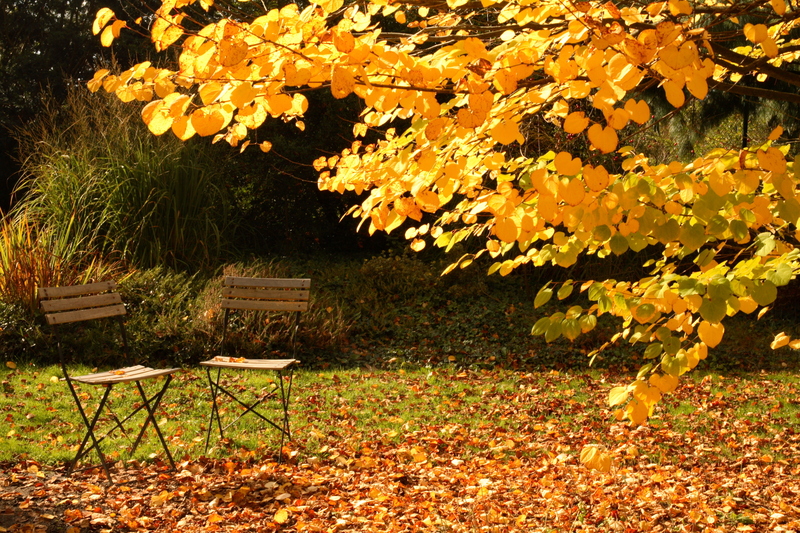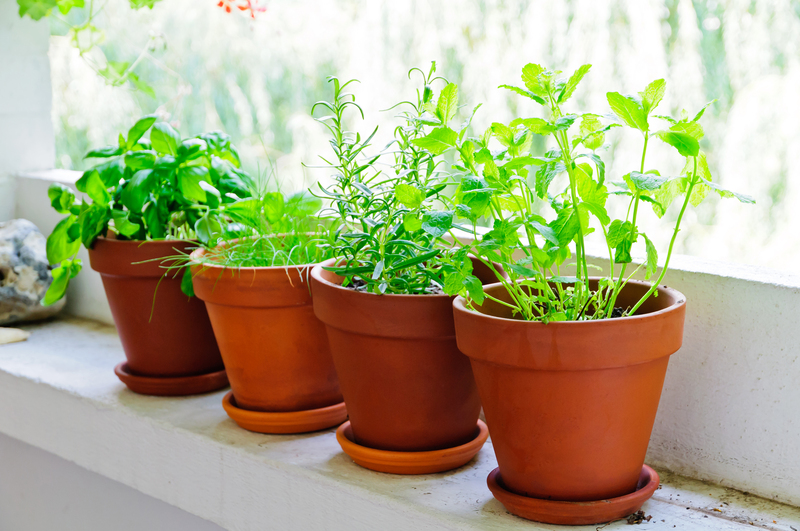3 Smart Methods for Maintaining a Weed-Free Garden
Posted on 29/05/2025
3 Smart Methods for Maintaining a Weed-Free Garden
Maintaining a weed-free garden is a dream that every gardener shares. Weeds compete with your plants for nutrients, water, and sunlight, undermining your efforts and compromising the health and beauty of your outdoor space. Fortunately, with a strategic approach, keeping your garden free of unwanted growth is not just possible, but also sustainable and efficient. In this comprehensive article, we'll guide you through three intelligent and practical techniques for keeping your garden spaces lush and weedless, so you can devote more time to enjoying your green sanctuary and less to constant weeding.
Why Is Keeping a Weed-Free Garden Important?
Before we explore the top weed control methods, let's understand why a weedless garden is crucial:
- Enhanced Plant Health: Weeds compete for essential nutrients, providing stiff competition for your flowers and vegetables.
- Pest and Disease Control: Weeds can harbor pests and plant diseases, increasing the chances of infestations spreading to your cultivated plants.
- Improved Aesthetics: A clean, weed-free landscape looks more appealing and boosts property value.
- Efficient Use of Resources: Mulch, fertilizers, and water are conserved for your desired plants rather than wasted on weeds.
Let's dive into the smartest strategies for maintaining a weed-free garden year-round.

Method 1: Mulching - Nature's Weed Barrier
Mulching is perhaps the most effective, natural, and sustainable method for staying on top of weed growth. By applying a layer of organic or inorganic material over your garden beds, you create a formidable barrier that prevents weed seeds from taking root and growing.
How Mulch Reduces Weeds
- Blocks Sunlight: Weeds need sunlight to germinate. A healthy layer of mulch denies them this critical resource.
- Suppresses Seedlings: Mulch physically prevents weed seeds from reaching the surface, inhibiting their germination and growth.
- Retains Moisture: While mulching suppresses weeds, it simultaneously conserves soil moisture for your garden plants, promoting healthier growth.
Types of Mulch for a Weed-Free Garden
- Organic Mulches: These include shredded bark, straw, leaves, grass clippings, compost, and wood chips. They slowly break down, adding nutrients back to the soil while suffocating weeds.
- Inorganic Mulches: Gravel, landscape fabric, stones, and black plastic are effective for permanently weed-free paths or low-maintenance beds.
Best Practices for Mulching
- Apply Generous Depth: Aim for a 2-4 inch layer of mulch; too thin and weeds may still poke through, too thick, and roots may suffocate.
- Keep Mulch from Stems: Prevent rot by leaving a gap around the stems and trunks of your plants.
- Refresh Annually: Top up your mulch at least once per year to maintain its weed-killing effectiveness.
With strategic mulching, you'll notice an immediate decline in weed problems, making it a cornerstone of a weed-free gardening routine.
Method 2: Smart Planting and Garden Design
A well-designed and densely planted garden leaves little space--and fewer resources--for weeds to establish. By optimizing your plant selection and layout, you can naturally outcompete weeds and reduce ongoing maintenance.
Dense Planting for Weed Control
- Plant Closer Together: Follow tighter spacing recommendations when appropriate, so plants quickly create a leafy canopy that shades the soil and suppresses weed germination.
- Use Groundcovers: Low-growing groundcover plants such as creeping thyme, sweet woodruff, or periwinkle serve as living mulch, preventing light from reaching weed seeds and adding seasonal interest.
- Layer Vertical Space: Mix tall, medium, and short plants to maximize soil coverage and minimize open, weed-friendly ground.
Strategic Crop Rotation and Companion Planting
- Crop Rotation disrupts the lifecycle of specific weeds by changing plant families and growth patterns in particular plots each season.
- Companion Planting: Certain plants, like marigolds, onions, or garlic, naturally repel weeds and pests, while dense row-planting (like carrots with lettuce) keeps soil shaded and weed-free.
Landscape Fabric and Barriers
For pathways or perennial beds, installing landscape fabrics with a covering of mulch ensures even more robust weed protection. Just be cautious to:
- Correctly anchor and overlap fabric to prevent weeds from slipping through seams.
- Cut only the minimal space needed for plantings to keep weed seeds at bay.
Through clever garden design that leverages space and planting density, you'll establish a resilient, weed-resistant landscape that makes ongoing maintenance simple.
Method 3: Proactive and Targeted Weed Control Techniques
Despite your best preventative measures, some weeds may still find a way into your garden. The key to keeping your garden weed-free is to adopt proactive, targeted techniques that address weeds immediately and minimize their spread.
Hand Weeding and Tools
- Regular Patrols: Walk through your garden weekly and pull out weeds by hand while they're young and easier to remove. Early intervention prevents mature weeds from setting seed and expanding the problem.
- Best Tools for the Job: Use a hoe, hand fork, or specialized weed puller for efficient removal, ensuring you get the root systems and don't just break off the top growth.
Water Wisely
Uncontrolled watering can encourage weed growth just as it does your plants. Instead:
- Drip Irrigation & Soaker Hoses: These methods deliver water directly to your plant roots, leaving surrounding soil--and weed seeds--dry and unable to germinate.
- Early Morning Watering: Watering in the morning ensures that evaporation rates are optimal for cultivated plants but discouraging to shallow-rooted weeds.
Thermal and Natural Solutions
- Solarization: Cover empty beds with clear plastic during hot months to "cook" the soil and kill weed seeds before planting.
- Flame Weeding: Use a flame weeder to swiftly scorch young weeds on pathways (keep away from valuable plants and use with caution!).
- Homemade Natural Sprays: Targeted applications of vinegar or boiling water can kill weeds in cracks and non-planted areas, providing an eco-friendly option without synthetic chemicals.
Spot Treatments for Stubborn Weeds
If persistent perennial weeds (like bindweed or dandelions) appear, address them immediately by digging out their entire root system or spot-applying an organic herbicide. Never allow tough weeds to flower or set seed!

Bonus Tips for a Garden Free of Weeds
- Inspect New Plants: Always check nursery purchases for hidden weed seeds or soil contamination before planting.
- Keep Edges Neat: Use edging materials and maintain tidy paths to prevent creeping weeds from infiltrating borders.
- Compost Carefully: Avoid adding mature weeds with seeds to your compost pile to prevent reintroduction into beds.
- Active Surveillance: Make weeding a quick, regular task--ten minutes a few times a week beats hours of labor later on!
Conclusion: Achieve a Beautiful Weed-Free Garden
A weed-free garden doesn't have to be a fantasy. By combining mulching, intelligent garden design, and proactive weed management techniques, you can dramatically reduce the time and energy you spend fighting weeds. These smart methods not only enhance your garden's beauty and productivity but also encourage sustainable, organic gardening practices that are eco-friendly and effective.
Make these powerful strategies part of your gardening routine, and you'll soon enjoy the rewards of a lush, vibrant, and low-maintenance landscape. Take charge now, and your weedless garden will become both a sanctuary for your plants and a source of pride and satisfaction for years to come.
- Ready to begin? Start by assessing your current garden and implementing the three smart methods detailed above. A weed-free paradise is within reach!

